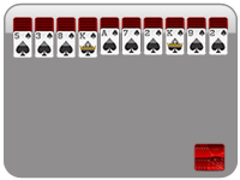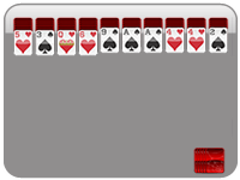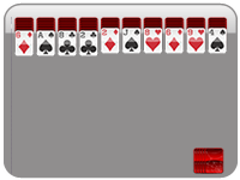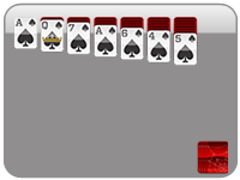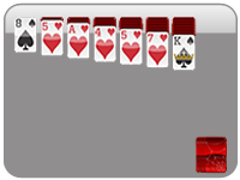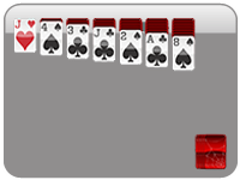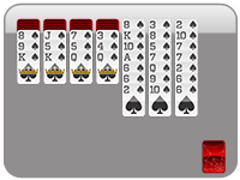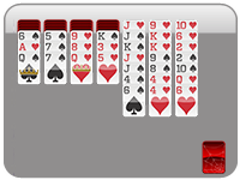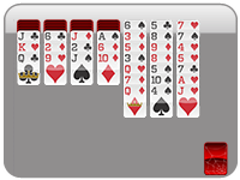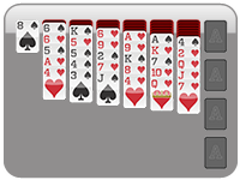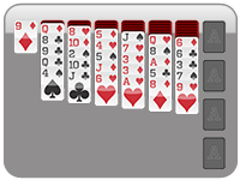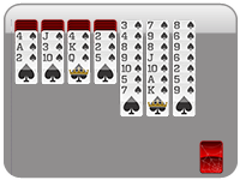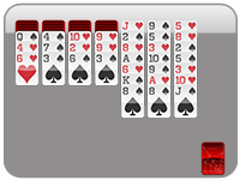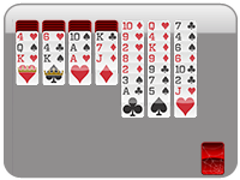Mastering Spider Solitaire Rules: A Beginner's Guide
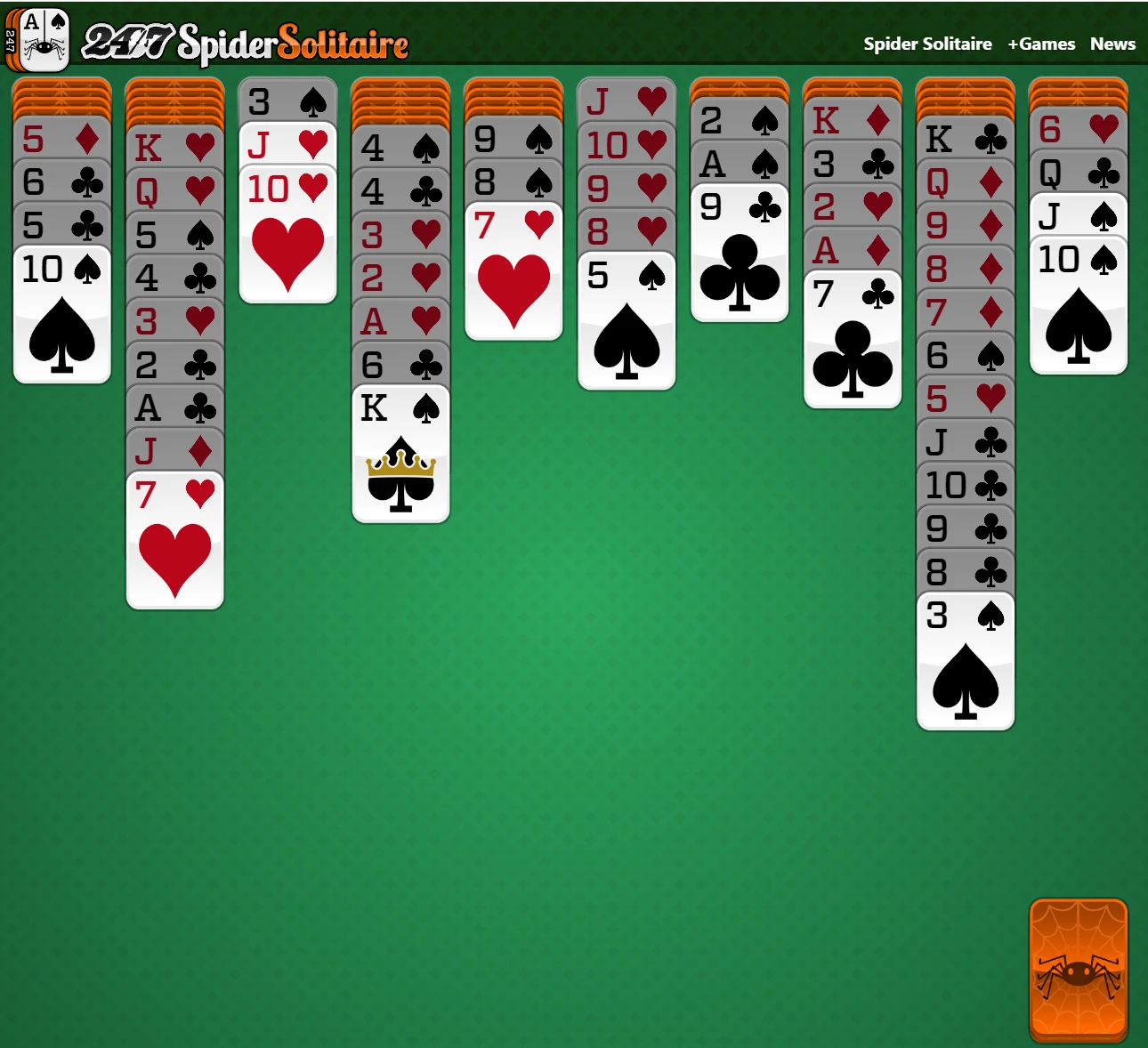
If you have two decks of playing cards and some spare time on your hands, then Spider Solitaire could be the ideal game for you. Like conventional solitaire, it gets you to lay out cards in a tableau and then create sets that you later file away into suits to complete the game. However, it also introduces a few changes that modify the original and make it harder.
The purpose of this guide is to teach you how to play spider solitaire. We run through the basics before exploring some winning strategies and common mistakes to avoid.
Understanding the Basics
Unlike conventional solitaire, spider solitaire requires two packs of cards. You can play with one, two, or four suits, but this guide will focus on the four-suit setup.
The aim is to assemble cards into 13-card suits from Ace to King. You can place cards from different suits on each pile in the tableau (the arrangement of cards on the table), as long as the number is the next in the descending sequence (high to low). For example, you can place a 4 of clubs on top of a 5 of hearts.
The game finishes when you create 8 Ace to King suits using cards in the same suit: i.e. Ace, 1, 2, 3, 4, 5, 6, 7, 8, 9, 10, Jack, Queen, and King of Hearts. You cannot win by creating mixed suits, so if you have multi-suit sequences, you must reconfigure these before the game ends.
Layout and Setup
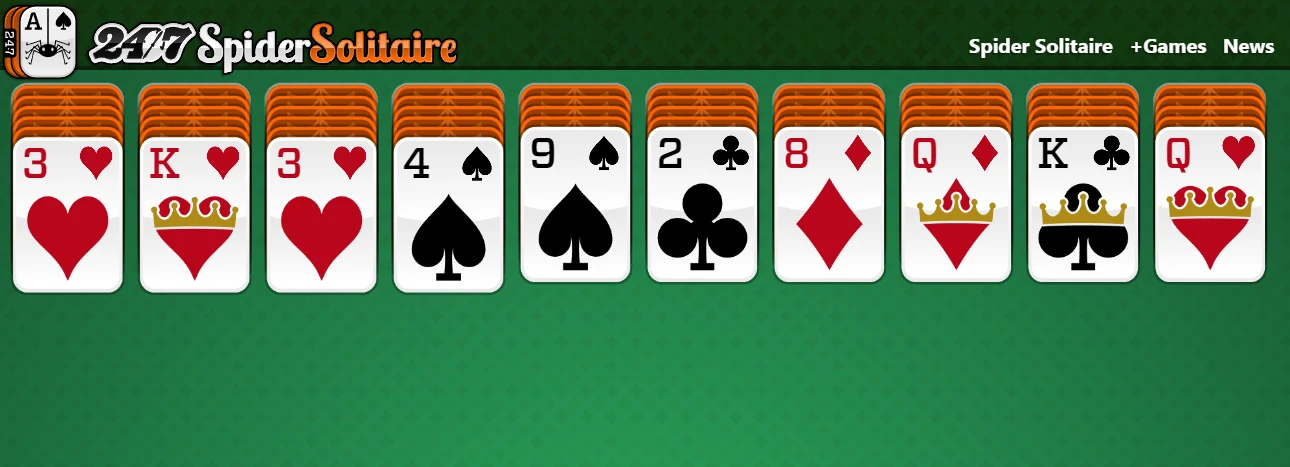
Spider solitaire begins with two packs of playing cards. In total, you should have 104 cards to start the game. Each card appears twice in the four-suit version (and more often in versions with fewer suits)>
Start by creating the tableau – the piles of cards running from left to right on the playing table. Deal these randomly from your double deck until you have 4 piles of 5 cards face down in the first four positions, and 6 piles of 4 cards face down in the remaining 6 positions. Then, place a final upturned card on each pile (resulting in either 5 or 6 in each pile).
Next, place the remaining cards in the dealer’s corner. You may need these later if you can’t make any suits with the existing cards.

If you want, you can also leave a space for the completed suits of cards. You need eight of these to win the game.
Moving The Cards
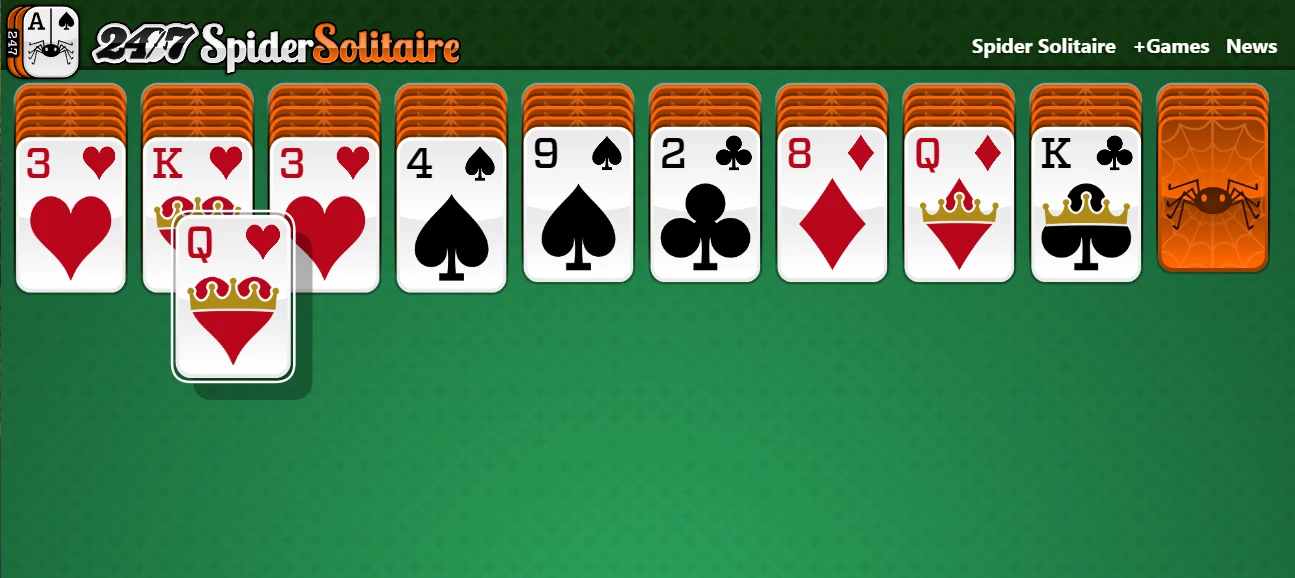
The next step is to move cards to complete suits. Here, you have two options:
- Place an upturned card on top of another upturned card of the next rank in the tableau (i.e. placing a 7 of hearts on top of an 8 of diamonds)
- Place an upturned card on top of another upturned card of the next rank but the same suit in the tableau (i.e. placing the 7 of hearts on top of an 8 of hearts)
To move a card and place it on a new pile, it must be one rank lower than the target card – you can’t leave gaps. For example, you can’t place a 5 of clubs on a 7 of clubs. You have to find a 6 first, preferably the 6 of clubs.

Placing cards of different suits on top of piles helps you reveal new cards that might help you complete existing suits. However, you can’t win the game using this method since completed sequences must be of the same suit, running from Ace to King.
Where possible, find opportunities to place cards of the same suit atop the cards of the next rank. This strategy lets you create a movable unit of several cards you can operate like a block when required.
Sometimes, a tableau block will become empty. You can use this slot to place any card.
As you play, you will discover that you can’t always complete straight sequences of suits. Sometimes, you need to compromise by moving cards onto target cards of a different suit. Furthermore, you don’t always know what card type will come up next. Some will help you complete suits, but not all.
Using The Stock
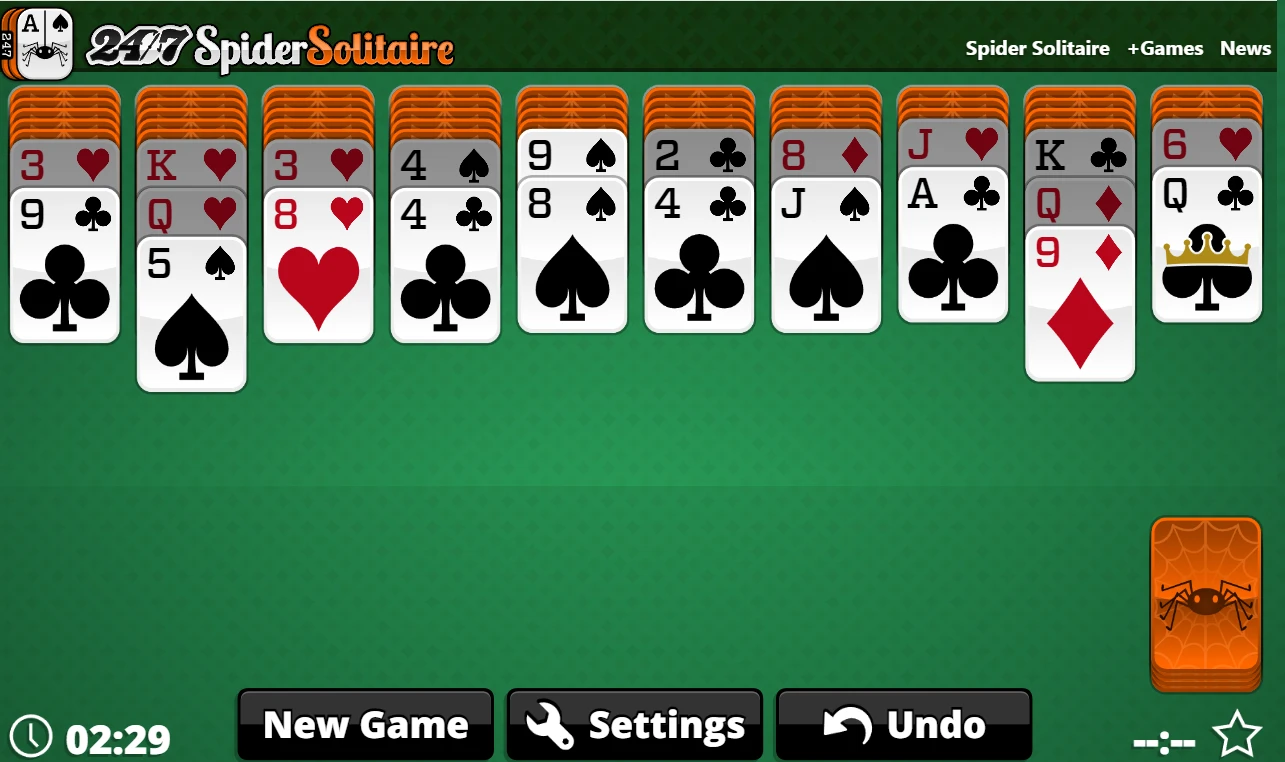
The stock is the remaining pile of cards not in the tableau. You deal them face-down and leave them in a pile until you think you need them.
Most players try to create sequences from the tableau first before using the stock, but you don’t have to. If you notice an opportunity to make a sequence using extra dealt cards, it can make sense to do so.
You must deal cards from the stock 10 at a time, placing them face up on each of the ten tableau piles, regardless of the card dealt. This rule can be helpful because it introduces new cards to the table. However, it can also block you from creating suits, so use it sparingly.
Using the stock becomes riskier the more suits you add to the game. In a single-suit game, it is almost always helpful. But in a four-suit game, you can get into trouble with cards not matching.
Using The Foundation
The last step is to use the foundation – where you move completed suits. (Online versions of the game will do this for you automatically).
Getting 8 completed suits is the aim in the four-suit version. Once you complete a suit, say diamonds, you remove it from the tableau, place it in the foundation, and attempt to complete the second diamond suit using the rules described above.
Giving Up
Sometimes, you will encounter spider solitaire games you can’t solve. You may run out of cards in your stock or be unable to rearrange the tableau to create sequences.
In these situations, the game ends and you reshuffle and deal again.
Winning spider solitaire with four suits is unlikely. The winning percentage is only 3.65%, whereas it is 38.5% when using two suits and over 90% when using one suit.
Winning Strategies for Spider Solitaire
Because of the challenge involved in spider solitaire, many players employ tried-and-tested strategies to win. These allow them to progress further than usual in the game and optimize their technique to reduce the risk of elimination.
These approaches won’t guarantee a victory – that depends on chance. However, they will teach you what plays are more likely to work and help you complete more sequences.
Focus On Same-Suit Sequences First
Start by concentrating your energies on completing same-suit sequences first, running from Ace to King. These can serve as blocks you can move around and, hopefully, connect once suitable cards become available.
Look for ways to move these sequences around to reveal new cards from the tableau. Uncovering these gives you a better chance of creating a space for placing and keeping cards at your leisure.
Focus On Whittling Down Piles In The Tableau
Related to this strategy, focus your efforts on whittling down piles in the tableau. This approach helps you create more empty spaces, giving you more flexibility to move piles around.
Spider solitaire is more challenging than conventional solitaire because each pile contains several cards (5 or 6). There isn’t a pile containing just one card (as in the original) so empty spaces come at a premium. Achieving one often means prioritizing one stack and focusing on first before moving on to others.
Don’t Draw New Cards Unless You Run Out Of Options
Drawing new cards in conventional solitaire is often helpful. However, doing so in spider solitaire is often a Faustian bargain. Yes, it allows you to continue playing, but it almost always makes your job harder. Cards complicate the tableau and can sometimes block you from accessing cards you need to make a new suit. Often, you are relying on the drawn cards being compatible with each other, and they aren’t always.
Manage Your Suits Carefully
You also want to manage your suits carefully, ensuring you have sequences of the same suit running through them. Sometimes, you don’t have a choice and have to mix them but avoid doing this too much. While it can help short-term, it makes your life harder when trying to move suits to the foundation.
Think Ahead
Lastly, don’t just react to the table as it is now. Instead, think ahead and how your actions might impact the future structure of the tableau. Sometimes, you can see how future sets might block you from completing suits, preventing you from winning the game.
Of course, thinking ahead is complicated by the fact you don’t know what cards you might draw from the tableau. But sometimes, you can see helpful, guiding patterns that warn you against making certain moves until you have a clearer picture of where you stand.
Common Mistakes to Avoid
Following the above tips will make it more likely you will complete suits in spider solitaire. However, avoiding mistakes that set you back and make winning harder is also essential.
Avoiding The Undo Button
The first mistake is avoiding the undo button. This feature in online versions of the game helps you reverse bad decisions and try different strategies – essential in four-suit spider solitaire, where there are few paths to victory.
If playing with physical cards, you can undo by retracing your steps and trying again. This approach can show hidden strategies that aren’t always obvious in the first playthrough.
Focusing On A Single Objective
Another common mistake is focusing on a single objective at a time, like building a string of hearts or diamonds. Ideally, you want to avoid playing spider solitaire like this and approach the game holistically instead. Even if a move seems obvious to you, it may be suboptimal, given the context of the other cards.
The best moves are those that:
- Reveal hidden cards in the tableau
- Add to an existing sequence
- Help with the construction of another sequence elsewhere
Finding moves that combine these three elements is usually safe. However, if you only hit one or two of them, you may want to search for a better move.
Also, avoid moves that will block future sequences. Sometimes, you are so eager to complete a suit that you ignore the fact that moving a card from the tableau will increase the chance of losing or having to draw from the stock. Don’t do this!
Failing To Practice
Skipping practice is also a problem for many Spider Solitaire players. The game is far more challenging than regular solitaire (with 4 suits) so it takes a long time to master.
In this sense, it is like chess. You won’t be good to start, but as you practice more and learn the patterns, you can get the hang of it and develop new techniques to win.
Failing To Move Multiple Card Sequences
Another common mistake players make is failing to move multiple card sequences in the same suit (you can’t do this with mixed-suit sequences). Many falsely believe they can only move one at a time.
The ability to move large sets of cards is an essential part of the game and makes it simpler to free trapped cards in the tableau. Even if a card you need looks dead and buried, moving a whole bunch of same-suit cards out of the way can reveal it and bring it into play.
Obsessing Over Empty Columns
The final mistake many players make is obsessing over empty columns. They think they have to create space at any cost.
You can understand this reasoning: when you create an empty column in Spider Solitaire for the first time, the game opens up to you and increases your options. As such, many players prioritize it because they know it increases the chance of winning.
However, solely focusing on empty columns can also back you into a corner. You may make suboptimal moves and fail to take advantage of card placements that might later win the game.
Do you want to play Spider Solitaire? Try starting with the single-suit version of the game and then working your way up the difficulty ladder from there.
Spider Solitaire Games
More Solitaire Games
More Games
Spider Solitaire News
Disclaimer
DISCLAIMER: The games on this website are using PLAY (fake) money. No payouts will be awarded, there are no "winnings", as all games represented by 247 Games LLC are free to play. Play strictly for fun.

